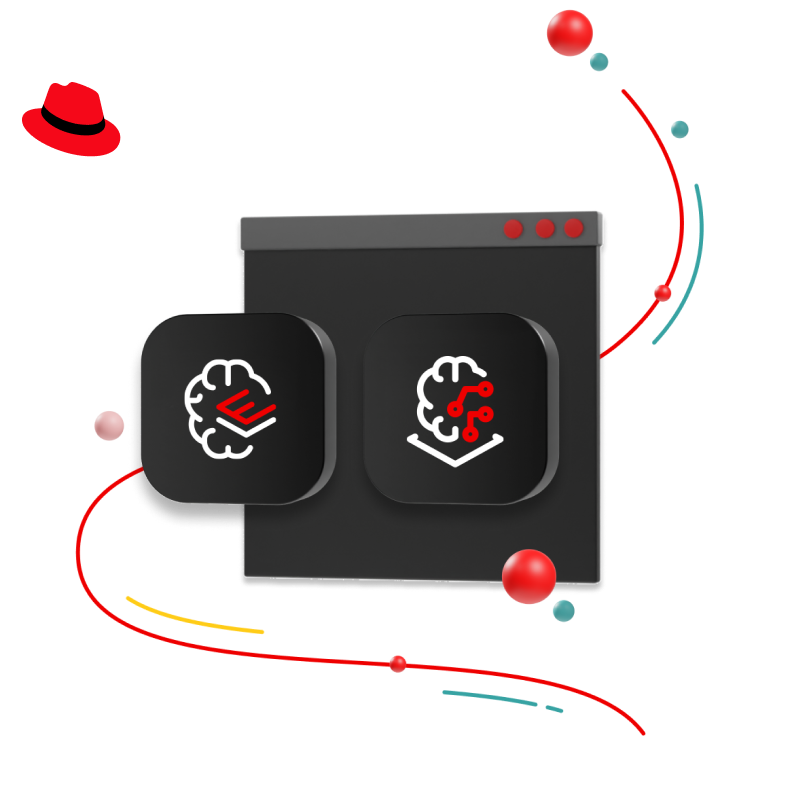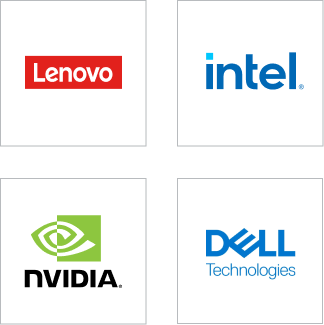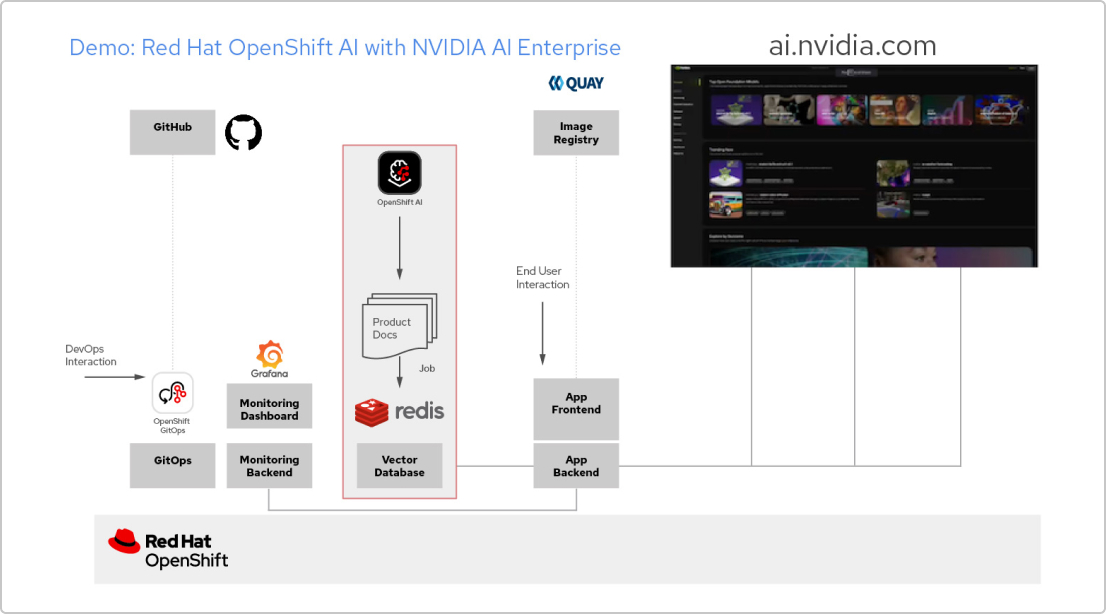Red Hat AI
Red Hat® AI accelerates enterprise AI adoption with small, purpose-built models, efficient customization techniques, and the flexibility to develop and deploy anywhere.
Red Hat AI can help you begin your AI journey or get ready to scale.
Red Hat AI offerings
Red Hat Enterprise Linux® AI
Red Hat Enterprise Linux AI can help customers at the beginning of their AI journey, who haven’t defined their business use-cases yet. The AI platform is built to develop, test, and run generative AI (gen AI) foundation models.
Features and benefits
Includes IBM's Granite family LLMs
Fine-tune models locally with InstructLab
Cost-efficient for customers with restricted GPU access
Red Hat OpenShift® AI
Red Hat OpenShift AI is built for customers who are ready to scale their AI applications. This AI platform can help manage the lifecycle of both predictive and gen AI models across hybrid cloud environments.
Features and benefits
Enterprise MLOps capabilities
Includes IBM Granite LLMs and InstructLab tooling
Build and deliver AI at scale with hardware accelerators and hybrid-cloud support.
What is InstructLab?
Red Hat’s InstructLab is a community-driven project that makes it easier for developers to experiment with IBM’s Granite models, even for those with minimal machine learning experience.
It’s a great place to start if you want to experiment with the AI model of your choice or fine-tune foundation models on your local hardware.
This removes the cost and resource barriers to experiment with AI models, before you’re ready to bring AI to your enterprise.
Red Hat AI partners
More AI partners means more paths to success, so you can keep your options open.
Experts and technologies are coming together so our customers can do more with AI. A variety of technology partners are working with Red Hat to certify their operability with our solutions. And our ecosystem keeps on growing.
Solution Pattern
Red Hat AI applications with NVIDIA AI Enterprise
Create a RAG application
Red Hat OpenShift AI is a platform for building data science projects and serving AI-enabled applications. You can integrate all the tools you need to support retrieval-augmented generation (RAG), a method for getting AI answers from your own reference documents. When you connect OpenShift AI with NVIDIA AI Enterprise, you can experiment with large language models (LLMs) to find the optimal model for your application.
Build a pipeline for documents
To make use of RAG, you first need to ingest your documents into a vector database. In our example app, we embed a set of product documents in a Redis database. Since these documents change frequently, we can create a pipeline for this process that we’ll run periodically, so we always have the latest versions of the documents.
Browse the LLM catalog
NVIDIA AI Enterprise gives you access to a catalog of different LLMs, so you can try different choices and select the model that delivers the best results. The models are hosted in the NVIDIA API catalog. Once you’ve set up an API token, you can deploy a model using the NVIDIA NIM model serving platform directly from OpenShift AI.
Choose the right model
As you test different LLMs, your users can rate each generated response. You can set up a Grafana monitoring dashboard to compare the ratings, as well as latency and response time for each model. Then you can use that data to choose the best LLM to use in production.
Red Hat AI success stories
Ortec Finance accelerates growth and time to market
Ortec Finance, a global technology and solutions provider for risk and return management is serving ML models on Microsoft Azure Red Hat OpenShift and is adopting Red Hat AI.
Boston University builds an educational platform
Boston University scaled a learning environment to accommodate hundreds of computer science and computer engineering users.








